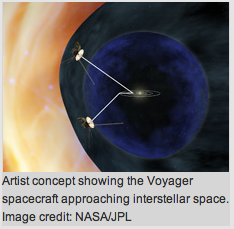 On Earth, we can find life anywhere liquid water is present. Scientists now have realized that “anywhere” includes such extreme environments as ice-covered Antarctic lakes, the dry Chilean desert and cracks in deep subsurface rocks.
On Earth, we can find life anywhere liquid water is present. Scientists now have realized that “anywhere” includes such extreme environments as ice-covered Antarctic lakes, the dry Chilean desert and cracks in deep subsurface rocks.
The organisms living in these harsh conditions are called extremophiles. They survive and often thrive in environments once thought too hot, too cold, too salty, too acidic, too dry, or with too high pressure or too much radiation for life to exist.
Scientists are studying microbes living in Earth’s extreme environments so they can better understand places where life might have existed on other bodies in our solar system.
Link to the NES Virtual Campus home page.
NASA Now Minute: Extremophiles

 NASA’s Voyager spacecraft are hurtling towards the edge of our solar system, more than 10 billion miles away from our sun. Interstellar space – the medium between stars – is a region no human-made craft has ever been. On Apr. 28, 2011, a live NASA TV program will feature mission scientists discussing the distant areas Voyager 1 and 2 are exploring, 10 billion miles away from our sun.
NASA’s Voyager spacecraft are hurtling towards the edge of our solar system, more than 10 billion miles away from our sun. Interstellar space – the medium between stars – is a region no human-made craft has ever been. On Apr. 28, 2011, a live NASA TV program will feature mission scientists discussing the distant areas Voyager 1 and 2 are exploring, 10 billion miles away from our sun.